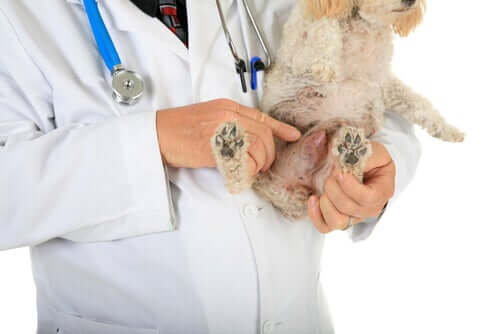How to Detect The First Signs of Illness in Dogs

There are many reasons why it’s important to get to know your dog well. Being able to detect physiological signals can be very important in order to keep your faithful friend healthy. In this article, we’ll share the most common signs of illness in dogs and how to detect them.
Loss of appetite and oral problems
A healthy dog doesn’t normally lose its appetite. So, if you notice that your dog has stopped eating (sometimes for even several days), this could be down to some sort of illness or disorder. Sudden changes in your dog’s weight can also be a sign of a loss of appetite.

A loss of appetite is often accompanied by other symptoms, such as gum problems like gingivitis, fever or even vomiting. If these signs persist, you should go to your vet straight away.
Excessive scratching
It’s perfectly natural for a dog to scratch itself. But if this scratching becomes continuous and concerning, this may be a sign of an illness. One possible cause is that their skin isn’t hydrated enough.

However, if the scratching is limited to a specific area, you should investigate further as this could be a tick or a serious infection or allergy.
Lumps, possible signs of illness in dogs
Any lump or strange inflammation should be a cause for concern. If you notice an unknown lump or swelling when examining your dog, you should let your vet know. The most common causes are fat cysts, bruises or warts.

However, sometimes they can be caused by malignant tumors, which need a more controlled, aggressive treatment. Therefore, it’s important to regularly examine your dog to rule out this kind of condition.
Other signs of illness in dogs
Sometimes, we can detect illnesses or disorders through the dog’s behavior. By behaving in an unusual way, dogs can tell us that something is wrong.
For example, your dog may start groaning, a clear sign that something isn’t quite right. Prolonged laziness or agitation can also be a sign that it’s suffering.

Being excessively aggressive towards other dogs or people or being overly reclusive and evasive can also be signs of illness.
As you can see, it’s important to stay alert so as to detect any problems and address them. Your faithful friend’s health depends on it.
All cited sources were thoroughly reviewed by our team to ensure their quality, reliability, currency, and validity. The bibliography of this article was considered reliable and of academic or scientific accuracy.
- Borie, C., Luisa, M., & Ch, S. (2002). Brucelosis en el perro. TecnoVet, 8(1).
- García, M. E., & Blanco, J. L. (2000). Principales enfermedades fúngicas que afectan a los animales domésticos. Rev Iberoam Micol, 17(Suppl), S2-S7.
